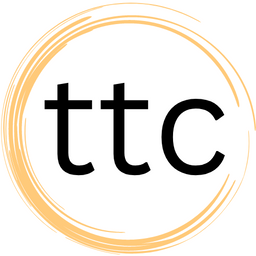From Developer to Tech–Business Bridge: The Career Move No One Teaches You
Learn 5 practical ways to move beyond code and become the bridge between tech and business. Improve clarity, build trust, and drive decisions—without leaving your developer role.

You fix bugs. You build features. You push code that works.
But one day — you’re asked to explain it to the business team.
Suddenly, your code isn’t enough.
Because to grow, you need to bridge the gap between tech and business.
And no one teaches you how.
Let’s fix that.
Here are 5 clear actions to help you move from a backend doer to a cross-functional driver — without leaving tech.
1️⃣ Explain What the System Does — Not What the Code Does
Stop saying: "We implemented idempotency by storing state flags in the retry logic."
Start saying: "Even if the same request is sent twice, our system now ensures the action runs only once."
Stakeholders don’t care about flags or logic. They care about outcomes.
📌 What to do: In every stakeholder-facing message or demo, describe what changed for the business. Make it about their world, not your tools.
📍 Real-World Example: Let’s say a developer redesigns the retry mechanism in an order submission API.
He explains it to the business using terms like sequence locks and Redis flags.
Naturally, they’re confused.
But now imagine he simply says:
“Even if the user clicks Submit twice, the order will never be duplicated. Our system knows it’s the same request.”
That one sentence can make leadership approve the release — with zero follow-up questions.
2️⃣ Use “Before → After” Language to Show Value
Devs often describe the feature they delivered. But stakeholders want the difference it made.
❌ "We added a logging mechanism for retry jobs."
✅ "Earlier we couldn’t trace failed orders. Now, we can track every retry and pinpoint failure reasons within seconds."
📌 What to do: In Jira tickets, status updates, or incident reviews — always describe what improved. Use side-by-side “Before vs After” statements.
📍 Real-World Example: Let’s say a reporting issue causes finance to question revenue numbers. A developer fixes it by aligning time zones in the SQL ETL job.
In the update, he writes:
“Adjusted time conversion logic in ETL.”
But that line creates more confusion than clarity.
Now imagine he rewrites it as:
“Earlier, reports showed a full day less revenue due to UTC offset. Now, the numbers match exactly what sales expects by geography.”
That one rewrite could restore trust across finance, sales, and leadership — instantly.
3️⃣ Use Simple Flow Diagrams to Align Everyone
Business teams struggle with logs and flags. But they understand flows.
You don’t need Visio. Use arrows. Use boxes. Show what happens first, next, then.
📌 What to do: In every explanation — email, document, or call — include one basic system/data flow sketch. Even drawn in PowerPoint or Miro, it creates instant alignment.
📍 Real-World Example: Let’s say during a UAT phase for a partner integration, the business team keeps raising delay concerns.
The tech team checks the system and insists the queue is functioning correctly.
Tension builds on both sides.
Now imagine a developer sketches a simple 3-step flow:
“Vendor File → Queue → Processor”
…and highlights exactly where the delay occurs.
In 2 minutes, everyone’s on the same page — and the conversation shifts from confusion to resolution.
4️⃣ Mirror Their Vocabulary to Build Trust
Business teams say “delayed orders,” not “API timeout.” They say “customer complaint,” not “400 error.”
📌 What to do: Listen to their words in calls or mails. Then use their terms when describing problems or solutions. This reduces friction, shows alignment, and makes your work easier to champion.
📍 Real-World Example: Let’s say a developer replies to a business ticket with:
“Issue resolved. The fix is deployed for 500 error on the POST endpoint.”
The business team reads it and responds:
“What does that mean for our customers?”
Now imagine the developer rephrases it as:
“The app no longer crashes when customers update their address — it now shows a proper message and saves it successfully.”
That’s when the team acknowledges the fix — and shares appreciation.
5️⃣ Always End With a Clear Next Step or Ask
Don’t just say, "Job is fixed. Retry flag added."
Instead: "Retry flag added. Would you like us to monitor results for the next 3 runs and share a summary?"
📌 What to do: Whether it’s an update, escalation, or solution — always close with one of these:
- What happens next
- What you’re waiting for
- What decision is needed
📍 Real-World Example: Let’s say in a weekly update, a tech lead writes:
“Issue fixed. Please confirm from your end.”
The business team assumes everything is done — but internal testing is still pending.
The silence causes a 4-day delay before anyone realizes the gap.
Now imagine the message had ended with:
“Please confirm by EOD if we should move this to QA or await your review.”
That one line would have prevented the delay.
In fact, building this habit has been shown to reduce back-and-forth lags by over 60%.
🎯 Final Thoughts
When you consistently communicate like this:
- You show ownership
- You reduce confusion
- You become the “go-to” person even outside your team
You don’t need a new role. You don’t need to quit coding.
You just need to translate your work into business clarity.
That’s how you move from being seen as just a developer… to the person who connects dots, calms chaos, and drives decisions.
Become the bridge — and watch your career compound.
🚀 Ready to Try This?
Pick just one update this week — a ticket, mail, or Teams message.
Apply these 5 habits.
Watch how the response changes.
Then repeat.
Because in tech, it’s not just what you solve.
It’s how clearly you show you’ve solved it — to the people who matter.
📌 That’s how tech careers grow — silently, steadily, and structurally.
💬 Let’s Connect
Enjoyed this article or have a perspective to share? Let’s connect on LinkedIn.

